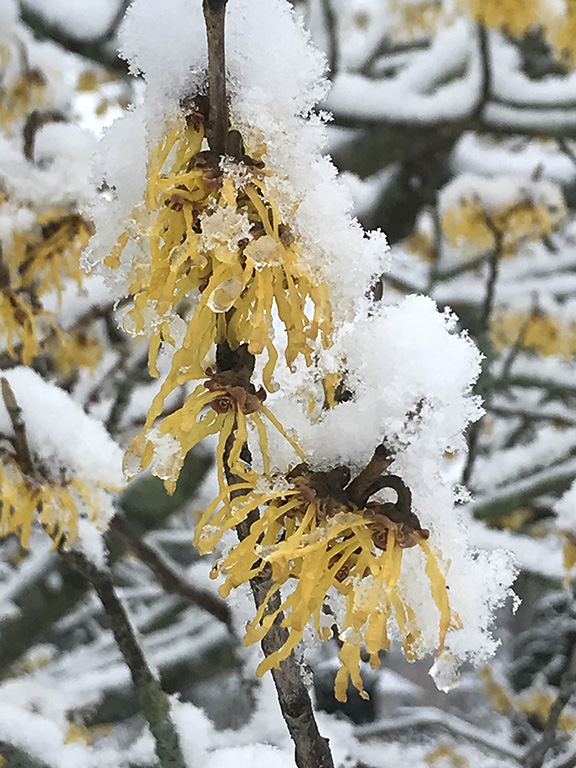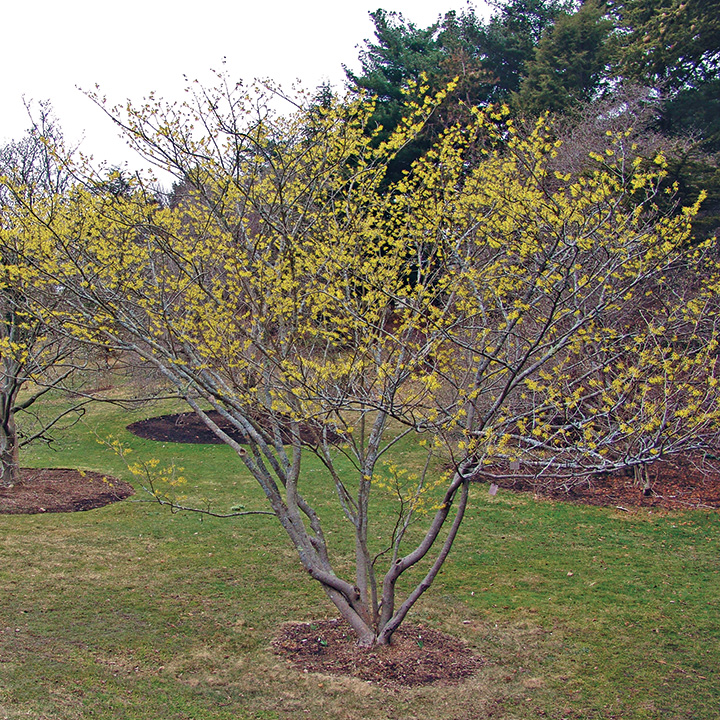An interesting byproduct of planting related species side by side is that pollinating insects can become unwitting hybridizers. Such was certainly the case with one of the Arboretum’s most famous introductions, Hamamelis × intermedia ‘Arnold Promise’. A beautiful and vigorous witch hazel, ‘Arnold Promise’ was named to honor the place where it began, a happy accident of nature.

The story begins in 1928, when Arboretum propagator William Judd collected and grew seed harvested from an Arboretum accession of Chinese witch hazel (H. mollis)—a plant acquired from plant explorer Ernest Henry Wilson’s 1907-09 expedition for the Arboretum to China and Tibet. Nearly two decades later, famed Arboretum taxonomist Alfred Rehder deduced that plants propagated from its seed were likely hybrids, as they exhibited intermediate characteristics of the Chinese witch hazel and its neighbor in the Arboretum landscape, the Japanese witch hazel (H. japonica). With this in mind, he selected an appropriate scientific name for the new plants: H. × intermedia. By the late 1950s, staff observed that one of the hybrid offspring consistently bloomed with larger flowers and over a longer period than the others. This individual was given the cultivar name ‘Arnold Promise’. Although this individual no longer survives, clones of this plant continue to delight late winter visitors to the Arboretum, and over time it has become a mainstay in New England nurseries.
The pleasingly fragrant flowers are composed of a reddish calyx and clear yellow petals, each nearly an inch in length. Even following severe winters, these are consistently borne in great profusion from mid February into March. Come fall, its autumn foliage color is a clear, bright yellow. Unlike North America’s vernal witch hazel (H. vernalis), dead leaves never persist through the winter to obscure the floral display.

As if these features were not enough to recommend it, the shrub’s broadly vase-shaped habit and gently ascending stems lend a gracious aspect to its appearance in all seasons. A delightful product of happenstance and the notice of astute growers, Hamamelis × intermedia ‘Arnold Promise’ stands as one of the Arboretum’s great contributions to horticulture. As a harbinger for spring in a climate notorious for long and difficult winters, the promise it keeps is that perseverance is rewarded.
Originally published in the Spring/Summer 2010 issue of Silva.